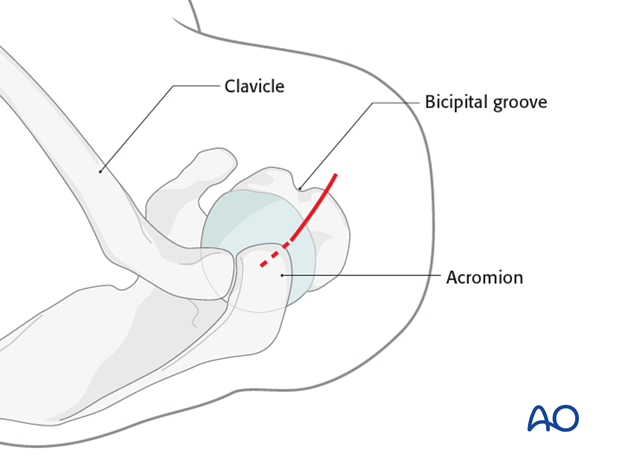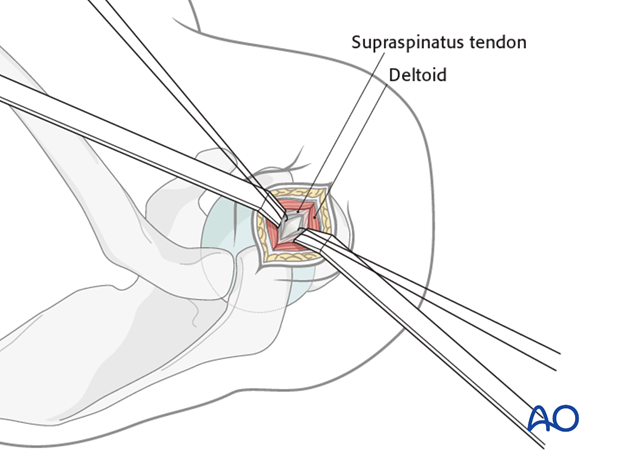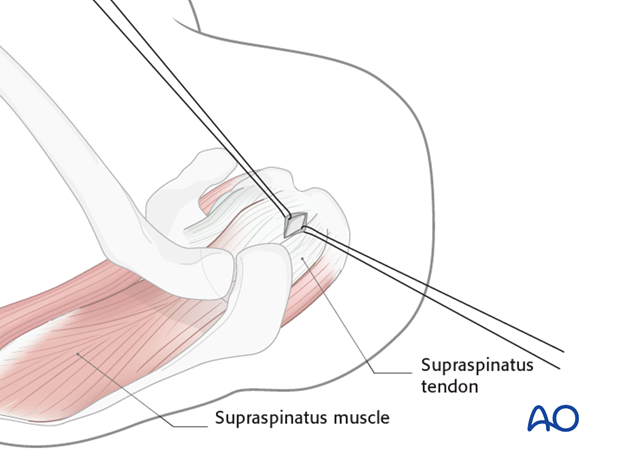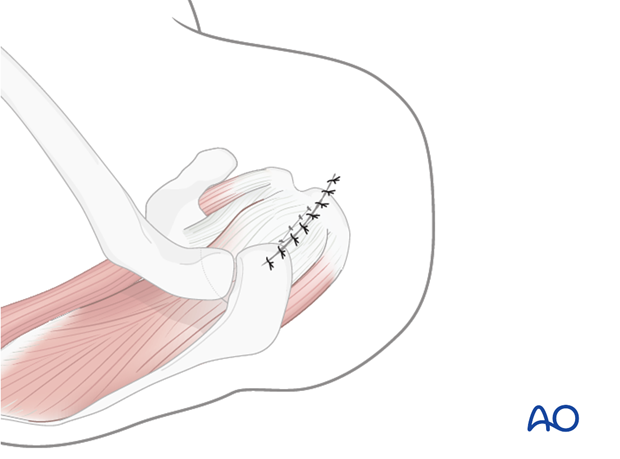Anterolateral transdeltoid approach to the humerus for antegrade nailing
1. Introduction
The humeral head is exposed via an anterolateral incision and the entry point is determined. Antegrade nailing involves entry through the rotator cuff. Care should be taken to minimize injury, and to repair the tendon.
2. Skin incision
Make a small skin incision from the anterolateral edge of the acromion, distally towards the deltoid insertion.
Incise the subcutaneous tissue sharply.

3. Exposure of the humerus
Split and retract the deltoid muscle within the raphe.
Incise and/or resect partially the subdeltoid bursa.
Incise the supraspinatus tendon in line with its fibers with a pointed scalpel blade. Retract both borders of the tendon with sutures.
Expose the superior humeral head cartilage medial to the greater tuberosity.
The ideal entry exposure is just posterior to the long head of the biceps tendon.

4. Pitfall: Damage to rotator cuff
Access to the entry site is through the supraspinatus tendon.
Damage to the rotator cuff is minimized by sharp incision. The edges of the incision may be retracted by sutures held with clamps or bent K-wires to avoid damage to the tendon.
If reamers are used, they should be passed carefully through the tendon before reaming. It is crucial to use sleeves for the reamers.

5. Wound closure
Irrigate and clean all wounds.
Close the supraspinatus tendon carefully.
A drain may be placed in the subacromial space.
Close the deltoid muscle, subcutaneous tissue, and skin separately.













